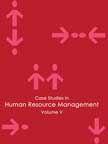Cisco's Organizational Structure and its Collaborative Approach to Decision Making




|
|
ICMR HOME | Case Studies Collection
Case Details:
Case Code : HROB132
Case Length : 25 pages
Period : 2001-2010
Pub Date : 2010
Teaching Note :Not Available
Organization : Cisco Systems, Inc.
Industry : Information Technology
Countries : US; Global
To download Cisco's Organizational Structure and its Collaborative Approach to Decision Making case study
(Case Code: HROB132) click on the button below, and select the case from the list of available cases:

Price:
For delivery in electronic format: Rs. 400;
For delivery through courier (within India): Rs. 400 + Rs. 25 for Shipping & Handling Charges
» Human Resource and Organization Behavior Case Studies
» HRM Short Case Studies
» View Detailed Pricing Info
» How To Order This Case
» Business Case Studies
» Area Specific Case Studies
» Industry Wise Case Studies
» Company Wise Case Studies
Please note:
This case study was compiled from published sources, and is intended to be used as a basis for class discussion. It is not intended to illustrate either effective or ineffective handling of a management situation. Nor is it a primary information source.
|
|
<< Previous
Excerpts Contd...
Accolades
Some industry observers and analysts felt that Cisco's organizational structure and its collaborative approach to decision making was an effective one
- potentially the organization of the future. "Now instead of a small group of executives telling everybody else what to do, people have authority to figure out for themselves what to do...
Criticism
However, some analysts and ex-employees of Cisco were not happy with the new organizational structure at Cisco. The structure led to chaos and slowed down decision making at times, they said.
"Right now it's chaos because there's so much on everybody's plate," said Geoffrey Moore, a management consultant who has worked with Cisco...
Cisco's Response
|
Chambers acknowledged that his critics could be right in their criticism of Cisco's organizational structure and its approach to decision making. However, he said that the company had arrived at its organizational structure after giving a lot of thought to it, continuously refining it since it was introduced in 2001...
Looking Ahead
In November 2009, speaking about Cisco's future strategy, Chambers said,
"The improving economic outlook combined with what appears to be a very solid execution on our growth strategy due to our organization structure and innovative business model enabled Cisco to move into 30 plus market adjacencies while reducing non-GAAP operating expenses by 10% year over year and also reducing headcount."...
|
|
Exhibits
Exhibit I: Cisco's 11 Technology Groups
Exhibit II: Cisco's Market Share in Different Segments
Exhibit III: Net Sales and Net Income of Cisco: 2000-2009
Exhibit IV: Cisco's Market Transition
Exhibit V: Top 10 in 2009: Fortune 100 Best Companies to Work
Exhibit VI: Cisco's Top Five Opportunities
Exhibit VII: Some Instances of What the Organizational Structure Helped Enable
Cisco To Do
Exhibit VIII: Cisco's Acquisitions: 2007-2009
Exhibit IX: Some Specific Instances Where Cisco's Organizational Structure
Enabled Effective and Speedy Decision Making
Exhibit X: Cisco's Three year Stock Chart

|
|



